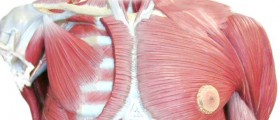
Schwannoma - Overview
Schwannoma is a benign tumor that consists of Schwann cells. Schwann cells are part of the nerves in charge with production of myelin, a protective sheet of the nerves. Since the tumor actually originates from the cells which create nerves it is obvious that it may occur on many locations in the body. This drives to final conclusion that symptoms and signs of the tumor are associated with its location and size.
Scwannomas are actually homogenous tumors and they form on the outside of the nerve. Due to their growth the affected nerve may be pushed aside or up against a bony structure which may eventually cause damage to the nerve. Fortunately, Schwannoma does not grow rapidly and the previously mentioned complications may be timely prevented. The tumor may be surgically removed but this carries a risk of its recurrence. Even though the tumor is considered benign, there is a chance of 1% that Schwannoma will turn into a malignant form of a disease called neurofibrosarcoma.
Types of Schwannoma and Related Symptoms
Vestibular Schwannoma, also known as acoustic neuroma, is a benign tumor which affects the vestibular nerve. This nerve is in charge with maintaining the proper balance. Once the nerve is affected by Schwannoma the symptoms and signs develop as a consequence of nerve compression. The patients usually complain about asymmetric hearing loss, tinnitus (ringing in the ears), dizziness and loss of balance. If the tumor is extremely large in size it may also cause compression of the facial nerve and consequent symptoms such as facial tingling or numbness. In severe damage of the facial nerve the patients may develop one-sided facial weakness and paralysis. This tumor predominantly affects adults with higher incidence in women.
Spinal Schwannoma is a tumor which occurs in the spinal cord. This tumor may be benign or malignant. The very presence of the tumor in the spinal cord makes it malignant even though its histological characteristics may be benign. This can be easily explained by the fact that the very presence and growth of the tumor causes compression and damage to the spinal cord. This damage leads to permanent complications. An initial symptom of spinal Schwannoma is progressive back pain. The pain may radiate towards the lower limbs. Further growth of the tumor causes compression of the spinal nerves and related symptoms such as tingling sensations, pain, weakness or numbness of the area innervated by compressed nerves. Compression in lower parts of the spinal cord may lead to the loss of bladder or bowel control.








_f_280x120.jpg)


-Causes,-Symptoms,-Diagnosis,-Treatment_f_280x120.jpg)





Your thoughts on this
Loading...